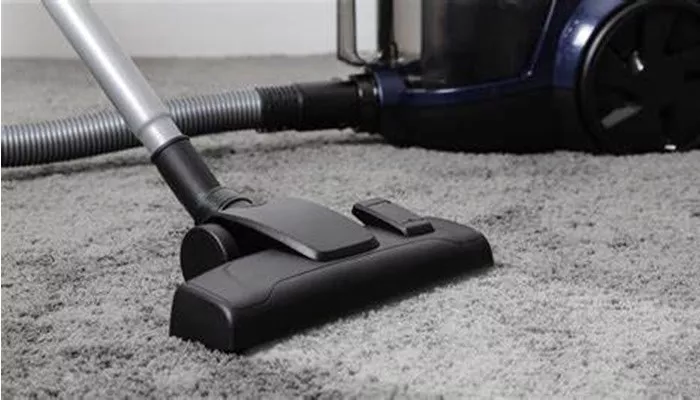Steam cleaning is a highly effective, eco-friendly, and chemical-free method of deep cleaning various surfaces. As a professional steam cleaner, I understand the intricacies of how steam interacts with dirt, grime, bacteria, and stains to restore surfaces to their original condition. This article will explore the mechanics of steam cleaning, its benefits, applications, and best practices to achieve optimal results.
How Steam Cleaning Works
The Principles of Steam Cleaning
Steam cleaning utilizes high-temperature vapor (typically between 175°F and 300°F) to break down dirt, grease, and microbial contaminants. The process involves three key mechanisms:
- Heat Penetration – The high temperature softens and loosens stubborn residues, making them easier to remove.
- Moisture Absorption – The steam’s moisture dissolves water-soluble substances like sugar, salt, and some organic stains.
- Pressure Application – Many professional steam cleaners include pressurized steam jets (15-150 psi) to dislodge deeply embedded grime.
The Role of Temperature in Sanitization
One of the most significant advantages of steam cleaning is its sanitizing effect. At 212°F (100°C), steam kills:
- 99.9% of bacteria (E. coli, Salmonella, Staphylococcus)
- Dust mites and allergens
- Mold spores and fungi
Unlike chemical disinfectants, steam achieves this without leaving harmful residues.
Types of Professional Steam Cleaners
1. Commercial-Grade Steam Cleaners
Boiler-based systems – Provide continuous steam flow (ideal for large areas).
High-pressure steam jets – Used for industrial degreasing and heavy-duty cleaning.
Low-pressure, high-temperature steam – Best for delicate surfaces like upholstery.
2. Portable Steam Cleaners
Handheld units – For spot cleaning and small jobs.
Canister steamers – Offer extended runtime for mid-sized tasks.
Steam mops – Designed for floors (tile, hardwood, laminate).
3. Truck-Mounted Steam Cleaners
Used in restoration and large-scale cleaning (e.g., fire damage, biohazard cleanup).
Generate extremely high temperatures (up to 300°F) for deep sanitation.
Applications of Steam Cleaning
1. Floor Cleaning
Grout Restoration – Steam penetrates porous grout lines, removing mold and discoloration.
Hardwood Safety – Unlike excessive water, steam evaporates quickly, preventing warping.
Grease Removal – Effective in kitchens and garages where oil buildup occurs.
2. Upholstery and Carpet Cleaning
Allergen Elimination – Kills dust mites and removes pet dander.
Stain Lifting – Works on coffee, wine, and organic stains without harsh chemicals.
Odor Neutralization – Steam breaks down odor-causing bacteria.
3. Kitchen and Appliance Cleaning
Oven Degreasing – Melts baked-on grease without scrubbing.
Microwave Sanitization – Removes food splatters and kills germs.
Refrigerator Coil Cleaning – Improves efficiency by removing dust buildup.
4. Automotive Detailing
Interior Sanitization – Cleans seats, dashboards, and carpets.
Engine Bay Degreasing – Safe for electrical components (unlike pressure washing).
Headlight Restoration – Removes oxidation for better visibility.
5. Medical and Commercial Sanitation
Hospital-Grade Disinfection – Used in clinics for non-chemical sterilization.
Food Industry Compliance – Meets health codes for grease and bacteria removal.
Advantages of Steam Cleaning Over Traditional Methods
1. Chemical-Free Cleaning
No toxic residues left behind.
Safe for children, pets, and allergy sufferers.
2. Deep Penetration and Sanitization
Reaches crevices that sponges and brushes miss.
Kills germs more effectively than most disinfectants.
3. Water Efficiency
Uses significantly less water than pressure washing or mopping.
Reduces wastewater production.
4. Cost-Effectiveness
Eliminates the need for multiple cleaning products.
Extends the lifespan of surfaces by preventing abrasive damage.
Best Practices for Professional Steam Cleaning
1. Pre-Cleaning Inspection
Check surface material compatibility (some laminates, unsealed wood, and silk may be damaged).
Remove loose debris with a vacuum or dry brush.
2. Optimal Temperature and Pressure Settings
Delicate fabrics – Lower temperature (175°F–200°F).
Grease and grime – High temperature (240°F–300°F) with moderate pressure.
3. Proper Technique
Slow, even passes – Rushing reduces effectiveness.
Overlapping strokes – Ensures complete coverage.
Vertical surfaces – Work top-to-bottom to prevent streaking.
4. Drying and Post-Cleaning Care
Use microfiber cloths to absorb excess moisture.
Ventilate the area to speed up drying.
5. Maintenance of Steam Cleaning Equipment
Descale regularly – Mineral buildup affects performance.
Check seals and hoses – Prevents leaks and pressure loss.
Use distilled water – Reduces mineral deposits in the boiler.
Common Mistakes to Avoid
Using Tap Water in Hard Water Areas – Causes scaling; distilled water is best.
Over-Wetting Surfaces – Can damage wood and drywall.
Ignoring Manufacturer Guidelines – Incorrect settings may void warranties.
Skipping Pre-Vacuuming – Loose dirt can scratch surfaces during steaming.
Conclusion
Steam cleaning is a powerful, sustainable, and efficient method for deep cleaning and sanitizing a wide range of surfaces. By understanding the science behind steam, choosing the right equipment, and following best practices, professionals can deliver superior results without relying on harsh chemicals. Whether for residential, commercial, or industrial applications, steam cleaning remains one of the most effective tools in modern cleaning technology.For optimal results, always invest in high-quality steam cleaning systems and stay updated with the latest techniques in the industry.
Related topics:

